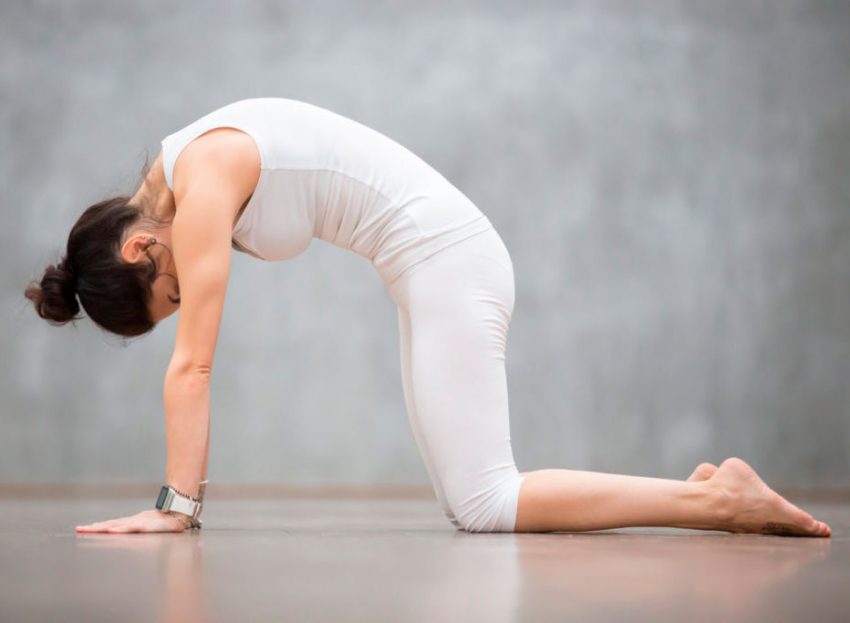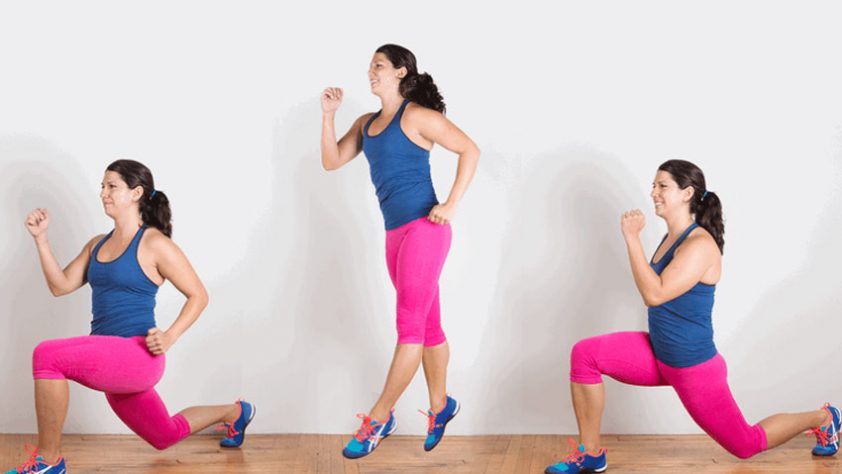The cat exercise is a thoracic and lumbar stretch. It is used in Pilates, fitness, yoga and exercise therapy. The movement will also be useful for those who need to build a bridge in the bench press, or relieve tension from the back muscles after training. It is usually used by power workers as a “hitch”, and in exercise therapy it can be the first or second exercise in the complex on the back. Movement instantly relieves pain and discomfort and is simple and affordable.
The benefits of exercise

The exercise can be performed both in static and dynamic mode. In hatha yoga there is a “cat” in the form of arching the thoracic spine upward and fixing it for several breathing cycles. Then they go either to the “dog head down” to bend the spine, or to the “cow pose”, that is, the deflection of the thoracic region to the floor in the “standing on all fours” position.
In fitness, dynamic variation is used, which is simpler and more understandable. This is a smooth transition from deflection to arching. It allows not only to relieve tension from the neck and shoulders, but also to strengthen the abs and back.
Benefits of the “cat”:
- warms up the back muscles, improves blood circulation;
- strengthens the abs and back in the ligament;
- relieves back pain caused by muscle spasms;
- helps to stretch muscles after strength load;
- teaches to synchronize breathing and movement;
- allows you to strengthen muscles even for beginners without strength training;
- helps to increase mobility in the shoulder joint, and teaches to work with the shoulder blades, which is important for the correct acceptance of the starting position in strength exercises.
Important: the upward bending of the spine must be compensated for by a reverse movement. After stretching the “cat”, it is recommended to make several deflections of the spine, allowing to lower the chest to the floor.
What muscles work

Correct execution of the exercise involves engaging most of the core muscles.
The main load falls on:
- extensors of the spine and lats. They provide dynamics – arching the back up;
- rectus abdominis muscle – supports the back in deflection, forms a stop that statically holds the deflection.
In the exercise, the muscles of the neck work, the muscles of the thighs and shoulders act as stabilizers. In fact, this movement can be used as a warm-up for the whole body. Regular performance of the “cat” forms the skill of deeper breathing, and strengthens not only the press, but also the diaphragm.
Execution technique

Like other bodyweight movements, “cat” implies complete control of the muscles of the body, breathing and smooth execution. It is important not just to quickly do a certain set of movements, but to feel the work of the muscles.
Highlights:
- control of inhalation and exhalation with the help of consciousness;
- the skill of synchronizing breathing and movement;
- work in full amplitude;
- smooth elaboration of too hard and weak points.
The following sequence will help you to do the exercise correctly:
- first you need to understand the movement itself. Stand straight, make a circle with your shoulders back, and lower your shoulder blades to your pelvis. You will get a “soldier’s posture”, the chest curved forward. Now stretch your arms forward, and bend your chest back, lower your head to your chest. Approximately this position will need to be taken against the floor;
- get on all fours, palms under your shoulders, knees under your pelvic bones. Push off the floor with your shins and palms, and as you exhale, push the chest up;
- lower your head to your chest, touch your sternum with your chin;
- stretch the thoracic spine up, then bend down as you exhale, raise your head, stretch your head up, bending completely;
- return to neutral, repeat with upward bending of the thoracic spine.
Recommendations

This is not your usual strength exercise that needs to be done in several sets and reps. The “cat” is introduced into the plan depending on the goals:
- power workers can warm up 1-2 approaches before training, the duration of the approach is 1-2 minutes;
- for rehabilitation after office work, warm-up, decompression of the spine – 1-2 minutes in the morning and in the evening;
- as exercise therapy for problems with the spine – 1-2 minutes at the beginning of exercise therapy
It is not recommended to “complicate” the exercise with the help of pancakes placed on the back, rubber shock absorbers or any other weights. The main thing is to breathe calmly deeply, and do the exercise regularly.
Exercise “cat” is not recommended to be introduced into the plan if there are hernias of the lumbar and thoracic spine in the stage of exacerbation. You should not do it on all fours if you are pregnant. Pregnant women can do a thoracic stretch while standing, in a reduced amplitude, resting their hands on a wall.
Include the movement in the warm-up before the strength, or perform it separately as a morning and evening mini-complex, and do not forget to breathe deeply and correctly. When the exercise seems easy, you can add deeper static thoracic stretches to it, such as yoga fish pose and a bar stretch.



